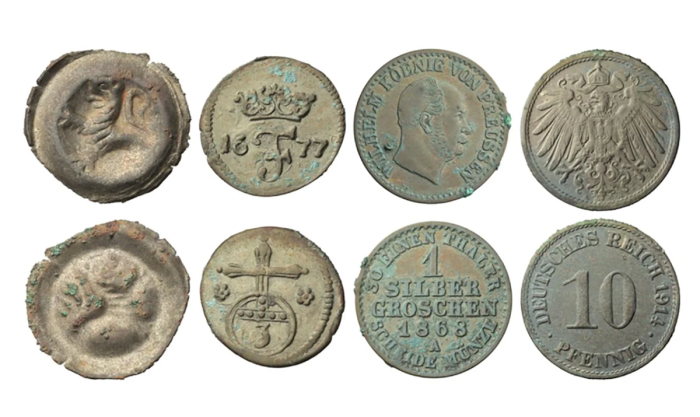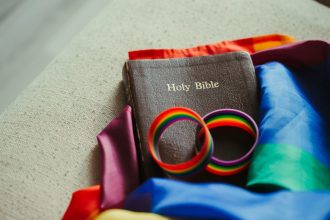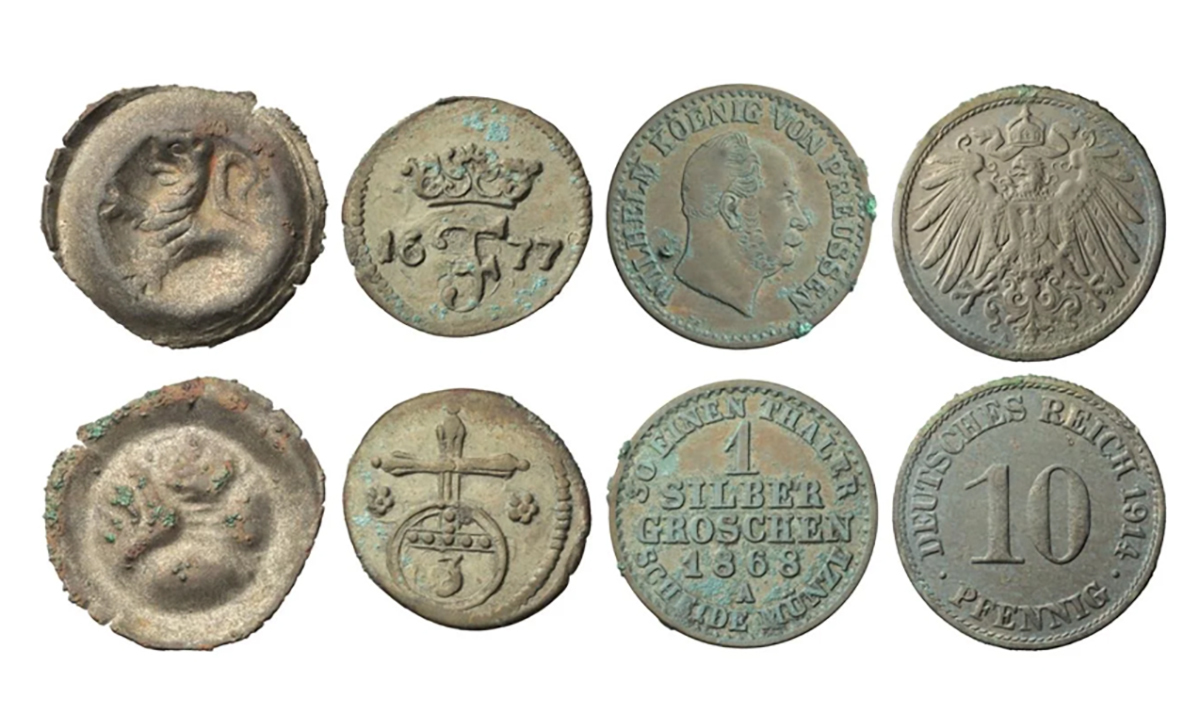
Renovations of a medieval church in Germany have led to the discovery of over 1,000 artifacts, with some dating back to the church’s founding in the 13th century.
St. Mary’s Church in Gardelegen began excavations in June 2022 with the intent of installing a new under-floor heating system. The excavation continued until September 2023 and covered 145 square meters and went to a depth of around 40 centimeters.
Some 679 coins or coin fragments were discovered beneath the old wooden floor of the church. A range of other items were found, including dress pins, book clasps, ceramics, animal bones, glass shards iron nails, traces of plants, tweezers and beads.
An 8 centimeter bronze monkey figurine was also discovered in the nave of the church. The monkey is depicted holding a horn to its lips, although experts are divided on whether monkey is drinking from a horn or blowing a musical instrument.
The State Office for Heritage Management and Archaeology told Archaeology News that representations of monkeys were quite common in medieval churches.
“They are often shown playing board games, making music, imitating humans, or entangled in vines and loops. During the late Middle Ages, they were increasingly regarded as demonic creatures and as caricatures of sinful, immoral human behavior,” they said.
Gardelegen is itself a historic town located in Saxony-Anhalt in northern Germany. The town was founded in the 10th century and has a hospital dating back to 1285. The town has a Catholic church and three Evangelical churches.
The town experienced many of the tragedies of German history, including trouble during the Thirty Years War and a darkening of its name in World War II when the SS organized the massacre of over 1,000 concentration camp prisoners near the town.
This article was originally published at Christian Today








